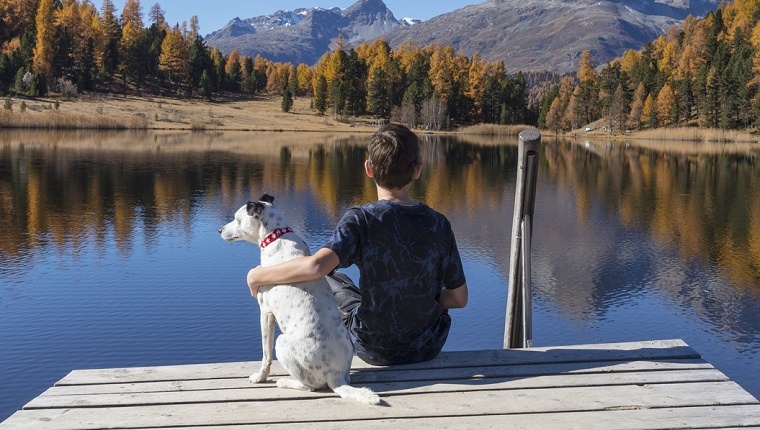Picture Credit: Peter Cade / Getty Images
Dogs are our friends, family, and sometimes even our coworkers. However, they’re still animals, and we cannot speak to them the way we talk to our human companions. We need to understand what they’re saying in their language–through their tail wags, barks, and growls.
Many of us have a basic idea of what different dog behaviors mean. Some of us personally tailor the way we talk to our specific dogs. However, many children don’t have the same know-how.
According to statistics gathered by UPMC, over half of recorded dog bite cases involve children, and 77 percent of the biting dogs are owned by friends, family, or relatives.
In many of these cases, the owners of the dogs had no idea that their pets were capable of harming someone. However, that doesn’t change the fact that all dogs could bite in certain circumstances.
While we should never blame children for an attack, we cannot shift the blame to dogs so quickly, either. Some dogs are problem cases due to a history of neglect, mistreatment, or poor training. Yet many instances of dog bites are completely preventable.
How To Prevent Dog Bites
One solution to this problem is simple. Parents need to educate children about dog safety early in their lives, and parents need to avoid allowing unsupervised contact with dogs.
No matter how friendly the family pet is, there is always the risk of an incident. If an adult is present, they can stop the child from accidentally provoking the dog, and stop a bite from turning into an attack.
Children need to understand dog body language to know which dogs are better left alone. In addition to general pet etiquette, kids should learn to recognize the signs of annoyance, fear, and apprehension in canines.
Most kids have a hard time resisting interactions with cute, furry animals. They feel excited about the chance to show their love.
However, they need to learn how to show love in ways that dogs can understand and how to play with dogs appropriately. They need to read body language to know when their affection is not welcome. Good communication between kids and dogs goes a long way in preventing misunderstandings and possible bites.
Another study referenced by SafetyAroundDogs.org revealed that just one lesson in dog behavior has been shown to drastically decrease high-risk behaviors in children. These dangerous behaviors can include reaching for unfamiliar dogs, approaching growling animals, and neglecting clear warning signs.
In short, kids trained to understand dog body language and behavior do not suffer bites as often as those who lack training.
Teaching Dog Safety

Picture Credit: Brigitte Blättler / Getty Images
You should study up on dog safety, yourself, before speaking to your child. Many misconceptions get passed along as fact over the years, but our understanding of dogs improves every decade.
Once you feel confident about your knowledge of dog handling & behavior, you can talk to your child about treating dogs carefully and respectfully.
You can also find articles and videos online made for children, which can engage them further. One study revealed that virtual dogs can help with this process, too, giving kids an interactive learning experience.
Children must remember the content they learn, especially if they are going to be around dogs. Review the videos and lessons often, and don’t hesitate to praise kids when they act responsibly.
Dogs aren’t the problem, and neither are children. We all want happy families that include our beloved pets, and teaching your child about dog safety is the best way to ensure everyone’s well-being. When we understand each other, we can live in harmony.
Do you teach your kids about dog behavior and body language? Do you think these kinds of lessons can prevent bites and aggression? Let us know in the comments below.
Related Articles: